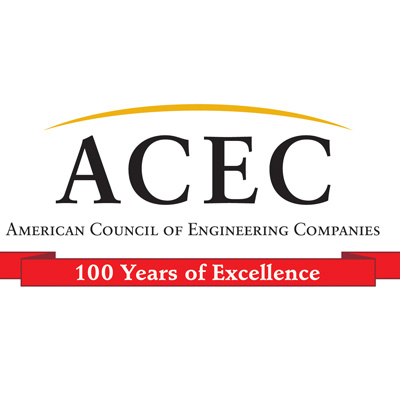AMERICAN COUNCIL OF ENGINEERING COMPANIES (ACEC)
Public-private partnerships have moved into the mainstream, but how much of an answer are they to America’s infrastructure challenges?
By Samuel Greengard
 Over the last decade, it has become increasingly clear that America’s infrastructure requires a significant upgrade. Roads, highways, bridges and tunnels have decayed and deteriorated—sometimes to the point of catastrophic failure. Yet, with tax dollars limited and funding for projects largely declining, finding a way out of the mess has been extraordinarily difficult.
Over the last decade, it has become increasingly clear that America’s infrastructure requires a significant upgrade. Roads, highways, bridges and tunnels have decayed and deteriorated—sometimes to the point of catastrophic failure. Yet, with tax dollars limited and funding for projects largely declining, finding a way out of the mess has been extraordinarily difficult.
“It has put the spotlight on public-private partnerships,” states Lee Weintraub, chair of public-private partnerships and vice chair of construction, law and litigation at Becker & Poliakoff.
P3s aren’t a new idea. They’ve been used in Europe, Asia and elsewhere to tackle large-scale transportation projects and other initiatives. Over the last couple of decades, the idea has also caught on—albeit slowly—in the U.S. For example, 10 major P3 projects took place across the country in 2016, according to consulting firm PwC. That’s double the number from 2015. But, suddenly, the concept has been thrust into the spotlight. In January, President Donald Trump introduced a proposal to expand the use of public-private partnerships as part of this proposed $1 trillion infrastructure plan to rebuild America, but Trump’s position on the viability of P3s has since softened. The question that’s now on everyone’s mind is: Can this approach work on a widespread basis?
At the center of everything is this: P3s can be complex and risky, and they aren’t a wise choice for every project or engineering firm. They require different thinking and skills. They also introduce ambitious objectives that may seem, or actually be, overreaching in scope. As a result, there’s a need to carefully weigh risks and rewards—and ensure there’s a net benefit for every constituency: the government agency overseeing the project; the investment firm backing the project; engineering and construction firms; and the public or end user.
“Right now, P3s are being used for a relatively small number of projects. But the concept offers a viable way to modernize and upgrade a good deal of infrastructure,” says Riz Shah, national public sector leader for Capital Projects & Infrastructure at PwC.
Minding the Gaps
If there’s one issue that bridges today’s political divide, it’s that maintenance and improvements to U.S. infrastructure have reached a critical level. The U.S. Bureau of Fiscal Service estimates through September 2015 that a $183 billion backlog of deferred maintenance exists. This includes both routine and critical facility and infrastructure repairs. Unfortunately, delaying infrastructure maintenance further will increase future costs as well as jeopardize safety and quality of life, PwC notes.
“There is clearly a sense of urgency. There is an understanding that something must be done to address the problem,” Shah says.
Today, most P3s in the U.S. involve large-scale transportation initiatives, but they’re also used to fund and build courthouses, hospitals, prisons and college dormitories. For example, The Port Authority of New York & New Jersey turned to a partnership for its $4 billion overhaul of a terminal at New York’s LaGuardia Airport.
In California, a $5 billion LAX modernization project—revolving largely around the construction of a people mover and new pedestrian bridges—was announced by the Los Angeles Board of Airport Commissioners in 2015. Meanwhile, Pennsylvania has wrapped 558 bridge repair projects into a massive $1.1 billion partnership that will compress 12 years of construction into three years.
“Over the last several years, a cleaner understanding of P3s has emerged,” says Geoffrey Segal, manager of government advisory and affairs for Macquarie Capital, Inc., a finance and advisory firm that invests in P3 projects. “The various stakeholders—contractors, engineering firms, local and state governments, organized labor and others—have come to recognize that these projects serve an important purpose and they have an important place in the scheme of things.”
Brian Middleton, executive project manager at Jacobs Engineering, says where there are revenue streams, there are opportunities. “However, P3s should not be viewed strictly as a financing tool. There are other reasons to use this approach, including improving project quality and lowering costs,” he says.
P3s represent an entirely different way to think about projects, notes Samara Barend, senior vice president and North American strategic development director at AECOM. “It’s not about extracting money from the asset. You can bring innovation forward with greater private sector risk sharing,” Barend says. “You can utilize economies of scale to deliver a project better and cheaper.” But there are other advantages, she says. “Rather than building something and then ignoring it until it falls apart or needs maintenance, you’re able to maintain it over its life span and, in the end, produce a more cost-efficient asset,” Barend says.
While this approach presents both opportunities and challenges for A/E firms, many companies simply aren’t equipped to handle P3 projects, which require a great deal of upfront time and resources— often for minimal compensation. Moreover, these projects require different skill sets—including a deeper understanding of technology and a more collaborative approach—and they can take years to unfold.
“There are a lot of people, including engineers, that have been doing things the same way for 30 years or more, and adapting to a P3 approach can prove extremely challenging,” says Middleton.
A Sampling of P3s
Here are a few P3 success stories:
- In August 2015, the Michigan Department of Transportation and Freeway Lighting Partners, LLC, entered a 15-year agreement to construct, operate and maintain streetlights.
- Port Miami Tunnel, a P3 between the Florida Department of Transportation and Miami Access Tunnel, LLC, led to the construction of a new $1.1 billion tunnel and roadway linking the port with nearby highways.
- The Dulles Greenway, a six-lane, 14-mile limited access highway in Loudoun County, Virginia, was built using a P3 with Toll Road Investors Partnership II, now owned by Australia-based Macquarie Group Ltd. and Autostrade International, which now operates the road.
- Denver Transit Partners teamed with Fluor Enterprises, Inc., and Macquarie Capital Group Ltd., as well as Jacobs Engineering, to build 47 miles of new commuter rail for Denver’s RTD Light Rail System. The $2.2 billion project is known as Eagle P3.
- The Long Beach Court Building in California is a $490 million award-winning facility that was built using a P3, with AECOM serving as architect of record.
Removing the Guardrails
Getting the U.S. up to speed on P3s will not be a simple task.
“It hasn’t translated into as robust a pipeline as many groups would like to see. There is still some confusion about these projects and how they can benefit everyone,” Middleton says.
In fact, the Brookings Institution reports that between 1985 and 2011, Europe and Asia built $540 billion in infrastructure using the approach. That’s about eight times the funding allocated in the U.S. during the same period. “Misconceptions abound. There is the notion that these projects enrich the private sector,” says Barend.
One barrier, Middleton says, is that government officials and others in decision-making roles aren’t always familiar with how P3s work and what results they deliver. Some also have concerns about winding up on the financial hook—if a project fails or doesn’t achieve the projected revenue stream. And that’s not an absurd notion as a few P3s have failed.
For example, the state of Indiana recently took control of a P3 interstate highway project in Indiana that had run into major problems and cost overruns. Officials reported that only $72 million was left to complete a project that would require $236 million. “These deals must be designed well,” Weintraub cautions. “At the end of the day, the government entity must come up with the money and financial framework to make a P3 work.”
Another roadblock is mistrust of P3s. Because the U.S. has traditionally relied on financing projects through bonds (in fact, federal law limits the use of tax-exempt bonds for projects where more than 10 percent of the funding comes from private sources), a government-centric approach has become the norm. Consequently, many people bristle at the idea of paying tolls or the idea that private companies operate assets and profit from projects that have traditionally involved the public sector. In some cases, there’s also sometimes opposition among organized labor, which may view P3s as a way to undermine their power and transfer jobs to the private sector—sometimes at a lower wage or with fewer benefits.
“There is political baggage and political risk associated with P3s,” says Weintraub.
All of this has created a paradox: Despite an uptick in P3 adoption and a growing number of success stories, some states are eschewing the concept while others that have previously embraced it are now backpedaling. New Mexico and Mississippi tried unsuccessfully to pass P3 measures in recent months. Meanwhile, Texas recently rejected a bill that would have supported P3s for 18 major highway projects at a price tag of about $30 billion. That left the state, which previously used P3s, unable to move forward on partnerships to finance infrastructure improvements. Opposition centered largely on resistance to tolls—and politicians defending the concept have found themselves in the crosshairs. “Texas has been extremely successful at rolling out large and complex P3s. But, some of these projects have become increasingly political,” says Segal.
However, the biggest challenge is often putting all the pieces together. According to the PwC report, “Trump’s $1 trillion infrastructure plan: Finding the right funding for the right projects” [see sidebar below], the biggest limitation to infrastructure investment today—the lack of suitable, bankable deals and incentives to attract private capital—must be carefully crafted.
According to InfraDeals, which tracks transactions, the total value of P3 projects currently stands at about $38 billion, but global infrastructure funds hold upward of $70 billion in their coffers. Simply put: Many agencies aren’t aware that financing is available.
Investing in the Future
The question of whether P3s can emerge as more than a niche tool remains to be seen. Yet, for now, President Trump aims to take the concept to a new level. In January 2017, his administration released a list of 50 infrastructure projects totaling upward of $137 billion that it has prioritized for P3s. Among them:
- The Gateway Program to improve the rail corridor between New York City and Newark, New Jersey ($12 billion)
- The Brent Spence Bridge spanning Kentucky and Ohio ($2.5 billion)
- Locks and Dams 52 and 53 on the Ohio River ($3 billion) These three projects alone would support an estimated 18,700 direct jobs and 19,000 indirect jobs, according to the president’s “Emergency & National Security Projects” report
Many in the A/E industry are supportive of the presidential focus on infrastructure, even though Trump’s plan lacks critical details about how to move P3s forward. “All the discussion about P3 projects will likely accelerate the use of this methodology,” Weintraub says. “It’s now on the front burner and far more visible.”
In a best-case scenario, the projects can result in net tax savings to the public and greater efficiencies. “Many of these projects shift the focus from upfront costs to paying over 30, 40 or 50 years,” Weintraub says. In many cases, they also introduce more consistent maintenance schedules.
Shah says that while there’s now an urgent desire to “get the dirt moving,” it’s vitally important to prioritize projects and for various constituencies to work together effectively. If projects run into permitting problems, project management issues, miscommunications, breakdowns, cost overruns and other failures, P3s will suffer over the long run.
“We really need to understand which projects should go first and what is truly defined as shovel ready,” Shah says. “We have to understand the economic impacts, job creation issues and ensure that there’s coordination across agencies so that we avoid problems with utilities and other infrastructure.”
There’s also a need to look for more creative ways to structure and fund P3 projects, including hybrid methods that use different income sources and variable fees, according to Segal. For example, a project might be partially funded through a traditional tax— such as a sales tax or gas tax—but also include a modest toll. This approach could help balance political and practical issues as well as diffusing overall risk by reducing reliance on any single source. “You essentially buy down the tolls by applying these other revenue streams,” he explains.
Finally, Shah says that A/E firms must think differently about these projects, including risk exposure and the financial framework. For instance, as technology becomes more pervasive, infrastructure becomes more than mere engineering and construction.
“If the private sector develops an asset, there’s a greater likelihood of embedding sensors into roads and other infrastructure. There’s the ability to measure usage and efficiency. Ultimately, it’s possible to collect this data, manage the data and unlock the value embedded in the data.
“The tolls collected on a road may pale in comparison to the value of the data that’s collected and sold to government agencies and other companies,” Shah says. “It’s important to think about how these projects can create alternative revenue sources.”
In the end, perhaps only one thing is certain: There’s a growing recognition that U.S. infrastructure requires a massive upgrade and P3s have a role to play.
“We have to recognize that this is a different model for building and operating projects,” says Middleton. “P3s are not ideal for every project or situation, and they require new and different skills from construction and engineering firms. But the concept is viable. It offers a proven way to address today’s infrastructure requirements.”
Download full article (PDF): Can P3s Rescue U.S. Infrastructure
 About the American Council of Engineering Companies
About the American Council of Engineering Companies
www.acec.org
The American Council of Engineering Companies (ACEC) is the voice of America’s engineering industry. Council members – numbering more than 5,000 firms representing more than 500,000 employees throughout the country – are engaged in a wide range of engineering works that propel the nation’s economy, and enhance and safeguard America’s quality of life. These works allow Americans to drink clean water, enjoy a healthy life, take advantage of new technologies, and travel safely and efficiently. The Council’s mission is to contribute to America’s prosperity and welfare by advancing the business interests of member firms.
Tags: ACEC, American Council of Engineering Companies, Engineering Inc., P3s, PPPs, Public-Private Partnerships







 RSS Feed
RSS Feed